Q2 2024 Consumer Travel Index
Hopper shares its pricing forecast for the next six months and what to expect across flights, accommodations and rental cars

Hayley Berg - Wed Apr 10 2024

Pricing Forecast
Airfare
6 Month Domestic Airfare Forecast
Airfare in April will remain lower than last year, averaging $290 per domestic round trip ticket. Fares will begin to rise in May as consumer demand shifts towards summer vacations, reaching a peak at the end of May and early June. Airfare will peak this summer at $315 per round trip domestic ticket, before falling as low as $264 per ticket into the shoulder season. Prices will remain in line with or just slightly higher than prices in 2023. Prices will remain lower than 2019 levels across the next 6 months.
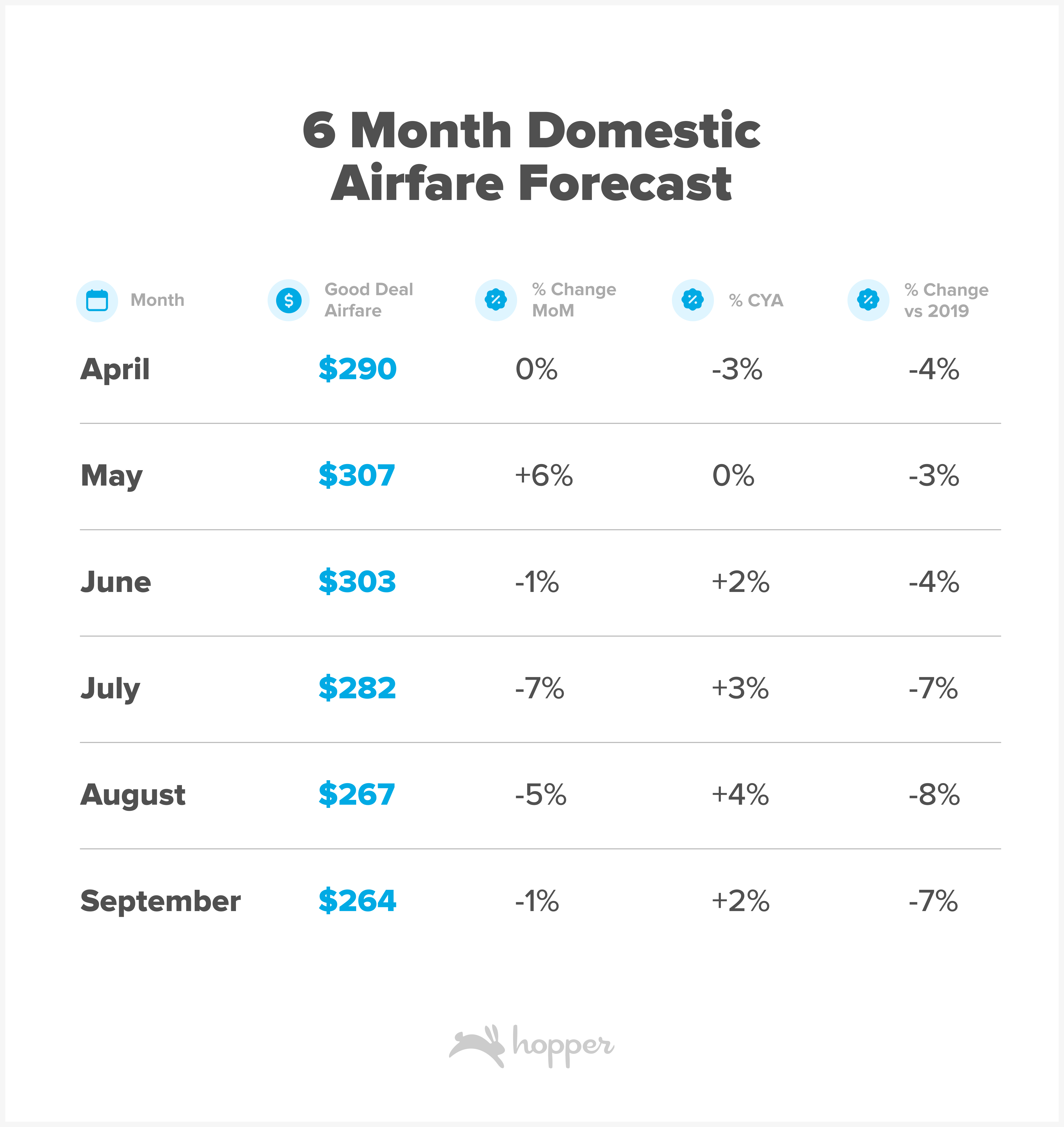
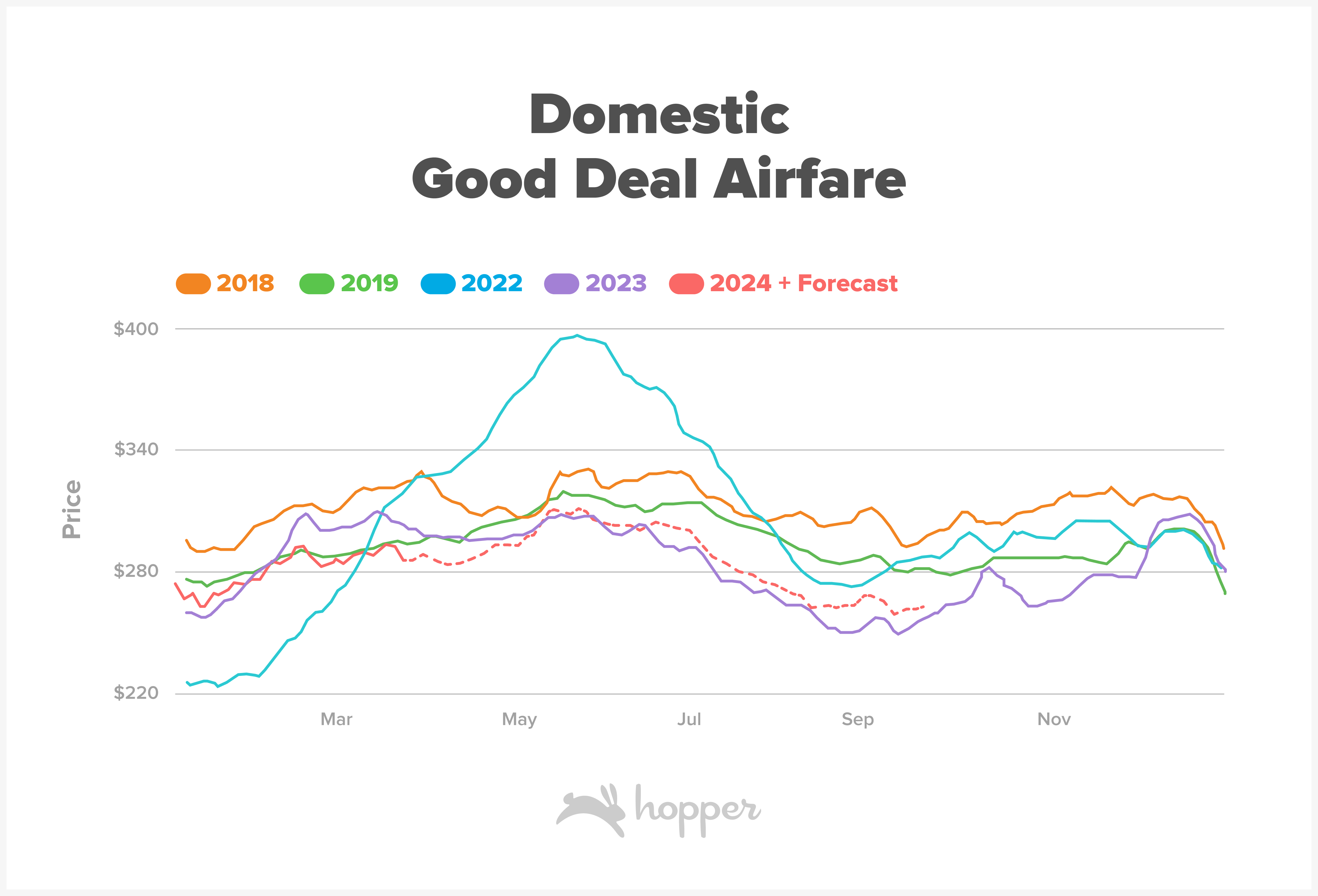
Lower prices on domestic routes come as seat capacity has fully surpassed pre-pandemic levels and demand for travel remains strong among American consumers. Airlines flew an estimated 88.3 million seats in March of this year, up 3.3% from last year and up 8.8% from this time in 2019. Airlines have achieved higher capacities by adding larger planes on routes rather than adding more flights as they remain constrained on physical supply of new aircrafts. In March, 8% fewer flights departed from US airports for domestic destinations than at the same time in 2019.
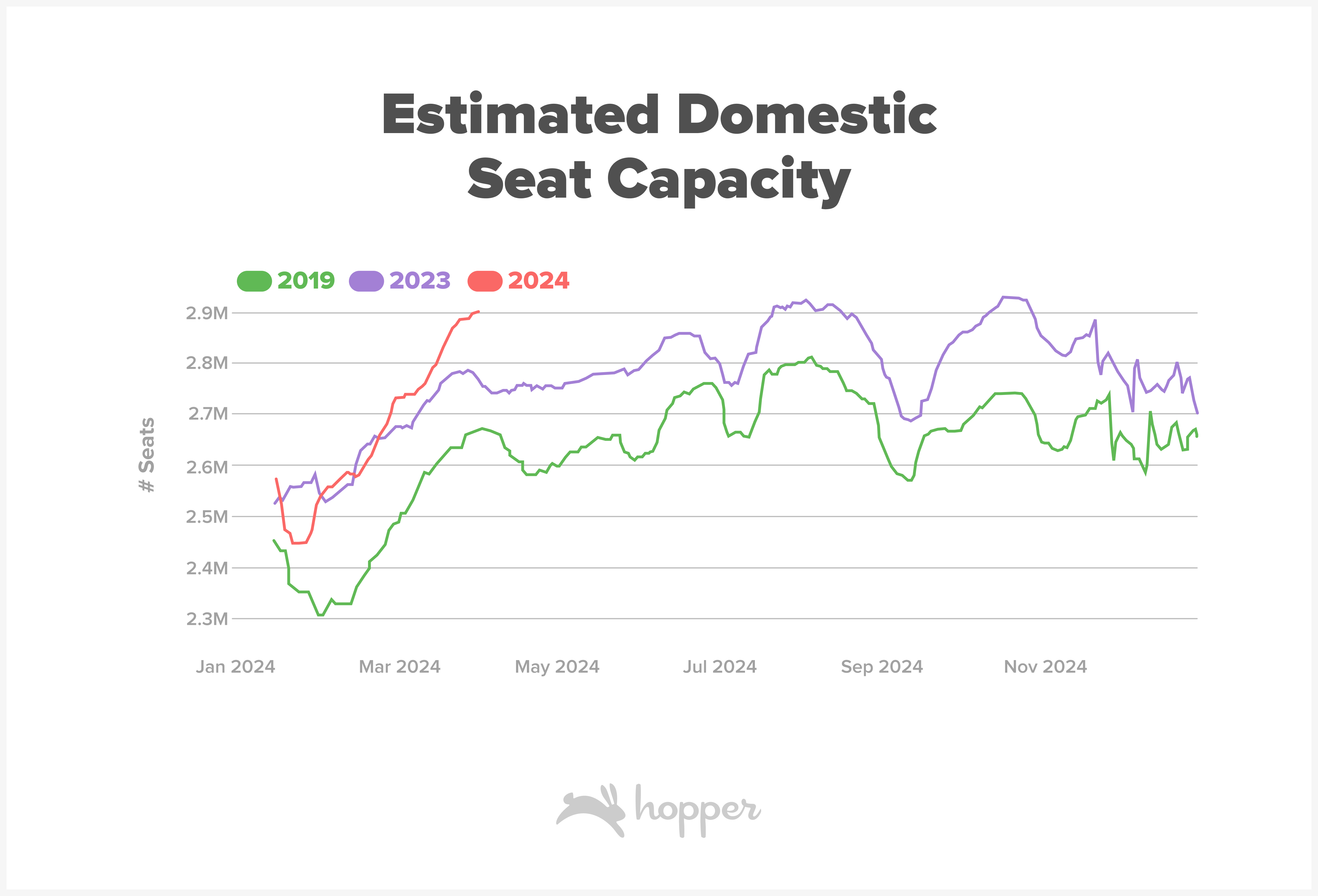
International Airfare
Airfare to international destinations continues to improve following two years of bloated prices due to quickly recovering demand, high fuel prices and supply constraints. Airfare to most major regions of the world has dropped compared to last year with the exception of trips to Canada. International fares remain higher than pre-pandemic levels to most regions, as higher fuel prices persist and airlines continue to rebuild capacity to many regions.
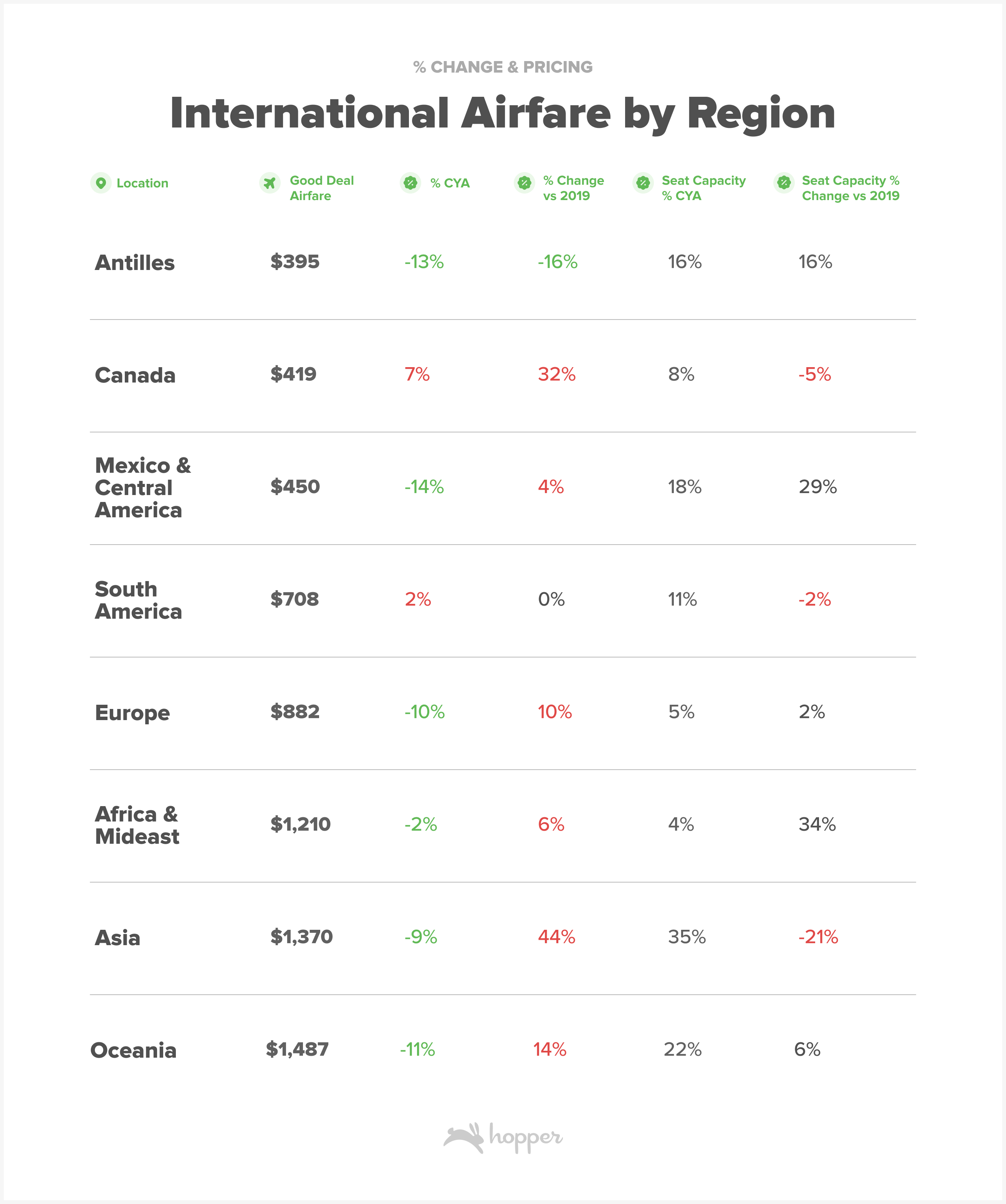
Jet Fuel Prices
Jet Fuel prices are averaging $2.58 per gallon, down 4% from this time last year. Though prices are lower than last year, it’s important to recognize that prices remain +34% higher than at this time in 2019 and more in line with prices seen 10+ years ago than those low prices seen in more recent years.
As fuel costs remain elevated, airlines are likely to continue hedging their supply to reduce the impact of price volatility. High fuel costs have a significant impact on the operating costs of long haul flights in particular, and are one driving force behind the higher prices prevailing on many international routes.
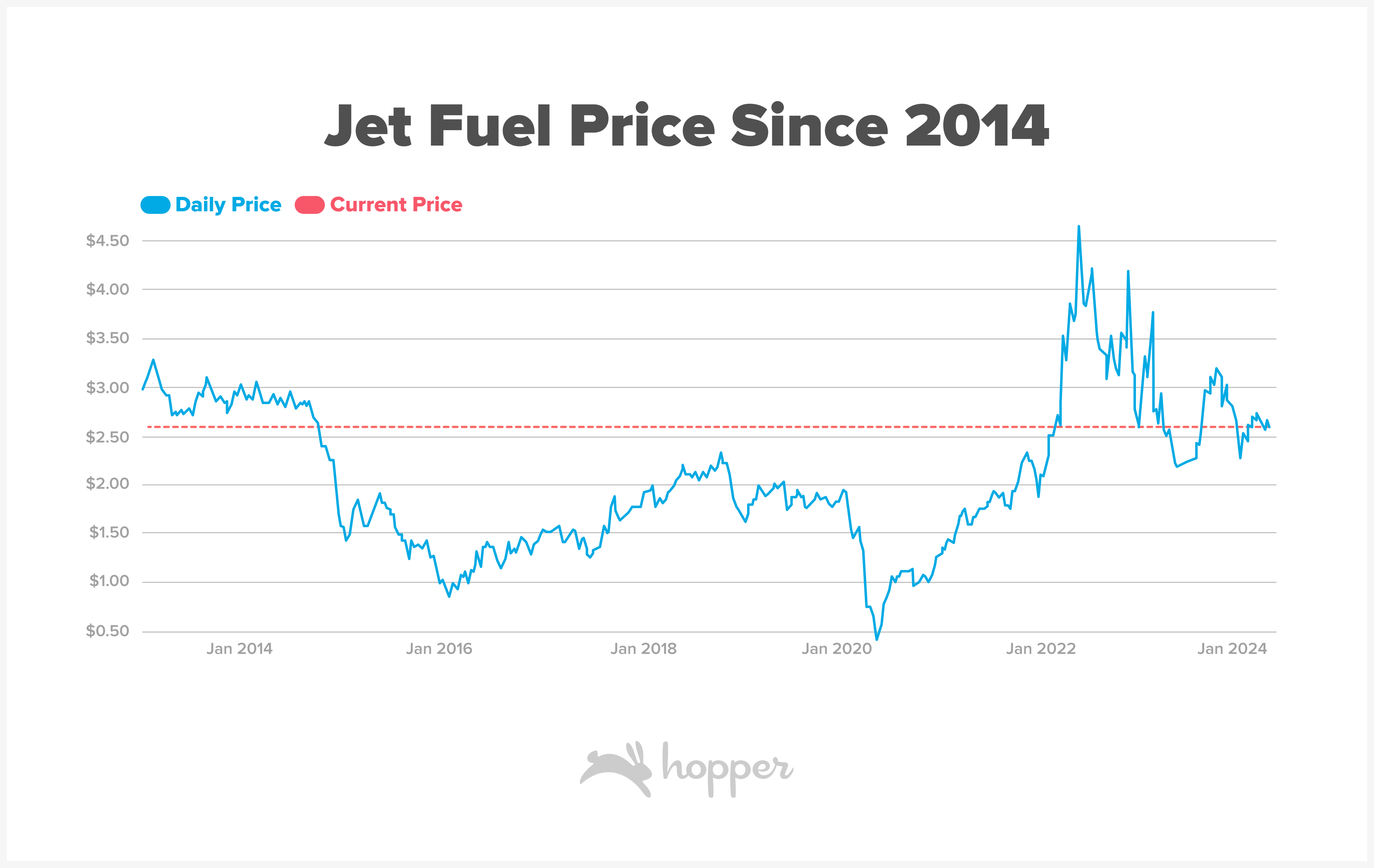
Rental Cars
Car rentals are averaging $42 per day with most travelers looking for 4-day rentals. Prices are just 3% higher from this time last year, from $40 per day. Prices have improved dramatically from 2021, when pandemic fears and low supply of rental cars results in record-high daily rates. Top destinations for rental cars are warm weather cities like Orlando and destinations across Florida, Los Angeles and Las Vegas, as well as some larger cities across the US.
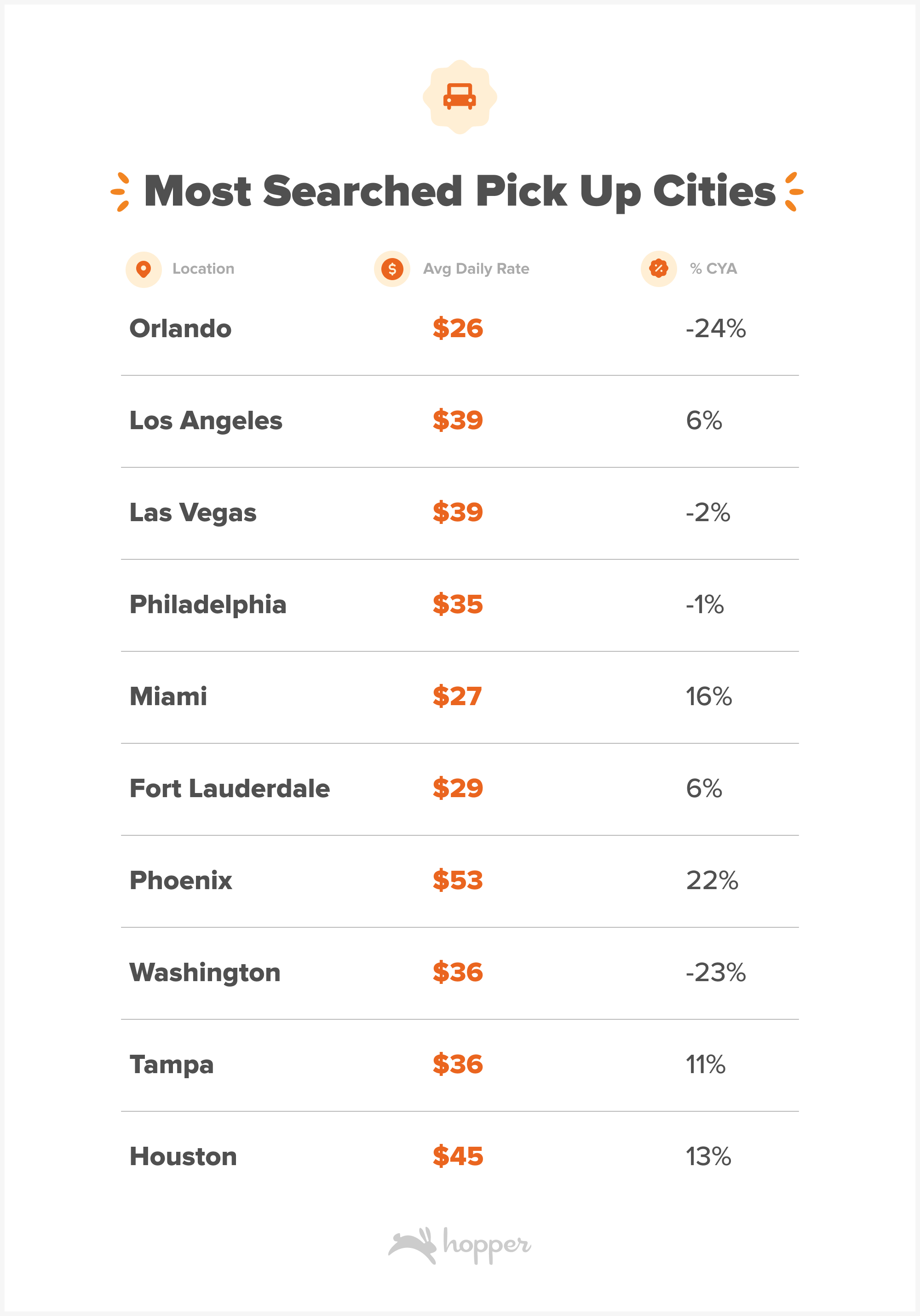
Accommodations
Hotel stays are averaging $206 per night today, in line with prices at this time last year. Top destinations for stays include major US cities like Las Vegas, New York City and Chicago.
When it comes to selecting a property, most travelers are selecting their hotels based on value- which property offers the best combination of price and amenities. The amenities travelers value the most are those that add convenience to the trip; free breakfast, internet connection and easy access to pools or the beach.
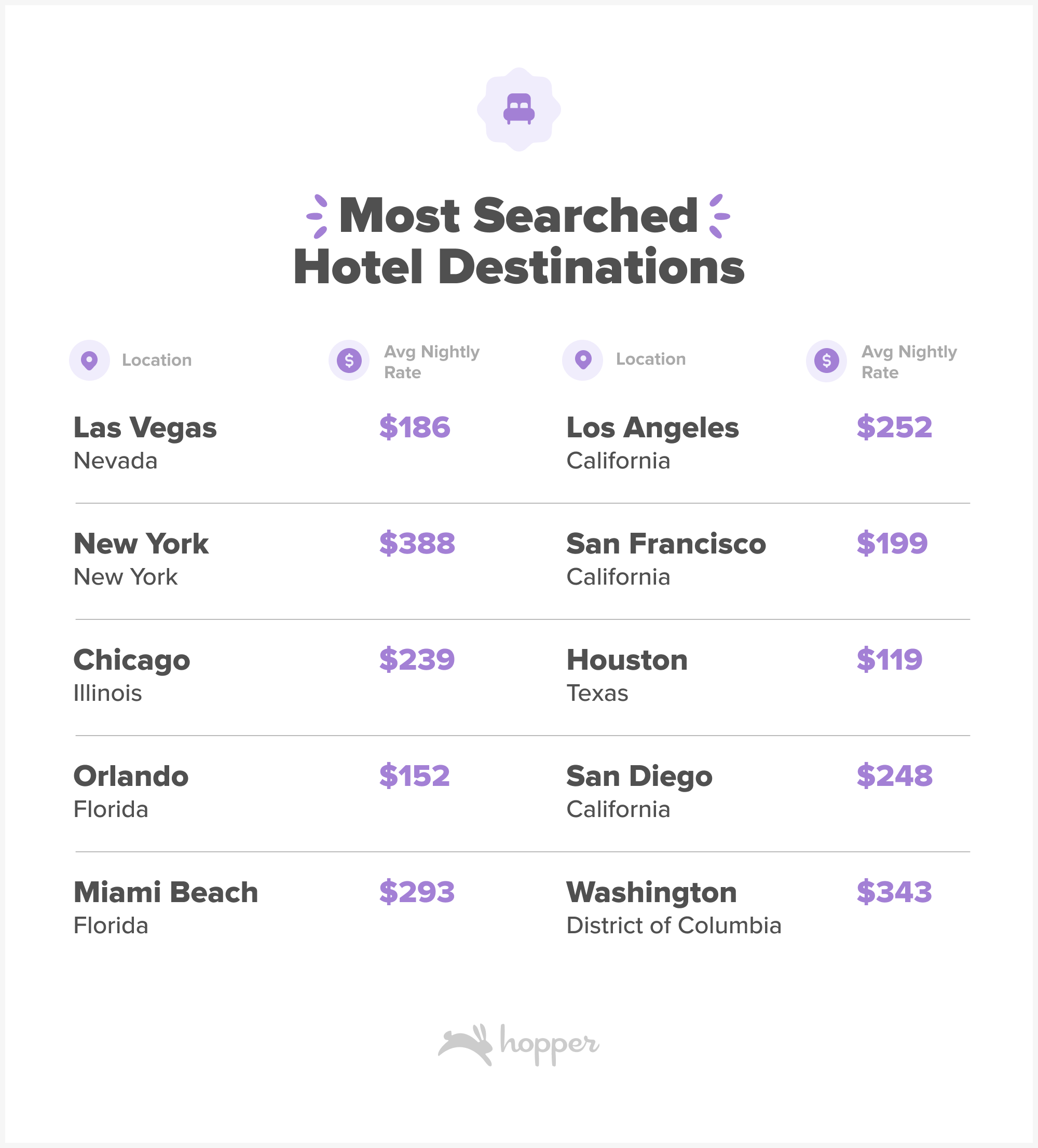
Trending Destinations
Trending Destinations for Domestic Trips
Domestic trending destinations are mostly smaller, more off the beaten track cities and towns across the US. Cape Cod, Massachusetts tops the list, followed by Cody, Wyoming with access to Yellowstone National Park, and Bar Harbor Maine, with access to Acadia National Park.

Trending Destinations for International Trips
Asia remains top of mind for American travelers, especially as the busy summer travel season grows closer. Osaka, Japan and Seoul, South Korea are the top two trending destinations for international travel right now, even with airfares over $1,300 per ticket. Other trending international destinations include beachfront cities like Nice, Malaga, Palma de Mallorca and Ponta Delgada.
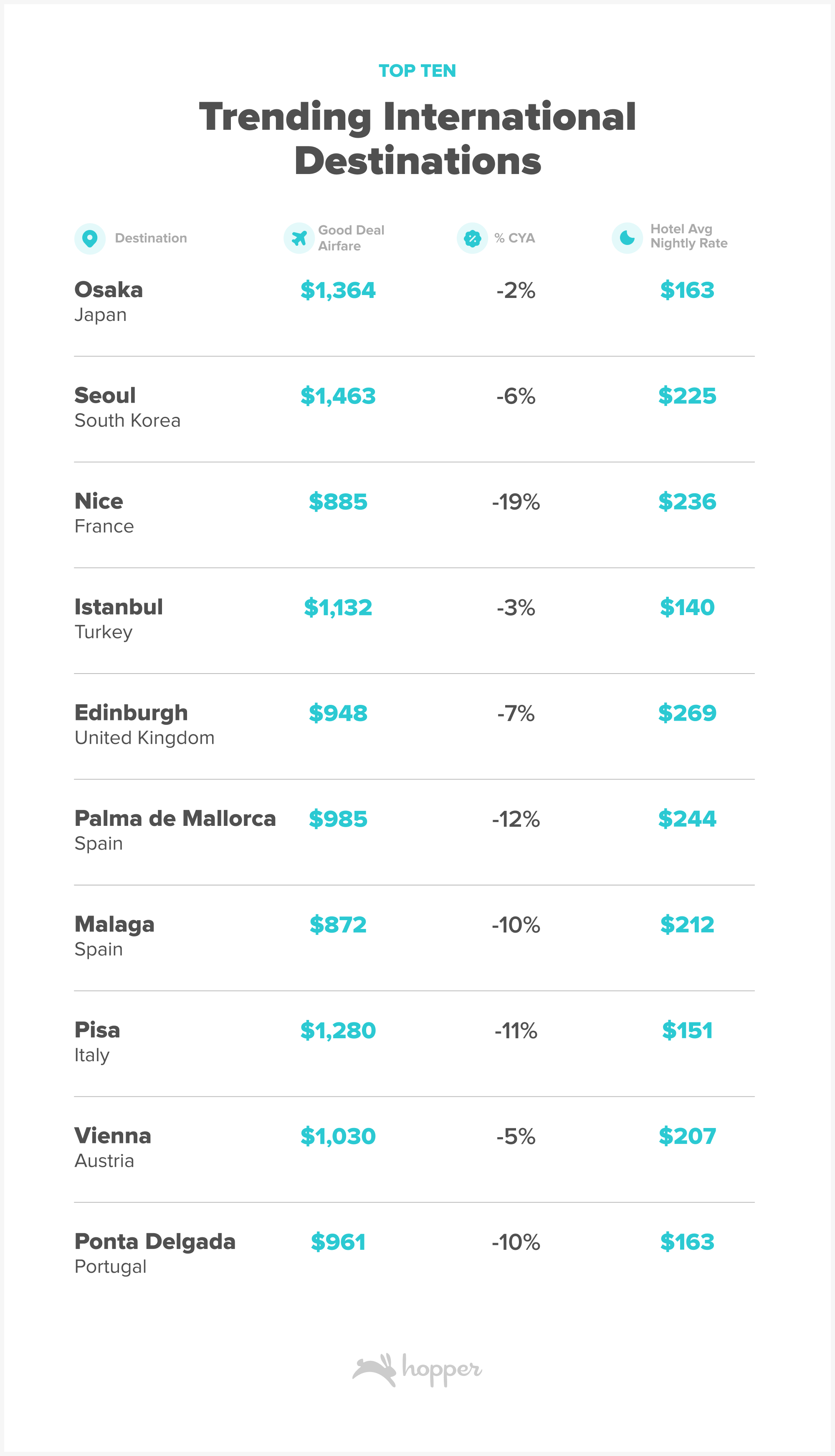
Consumer Snapshot
Gen Z Travelers & the Rise of the TikTok Trip
Though young now, Gen Z will be the next largest generation of travelers and is primed to be one of the most valuable for the industry. This demographic has already signaled that they intend to prioritize spending on travel experiences more than any previous generation. How younger travelers think about and plan travel is significantly different from the approach of older generations, as these travelers leverage social in new and unique ways.
Roughly ~25% of Gen Zers and Millennials who booked travel in the last year say they used social media to research their trip, compared to just 17% of Gen Xers and 4% of Boomers. This means travelers are leveraging Instagram, TikTok, Facebook and more during the travel process at a rate nearly 7x higher than Boomers.
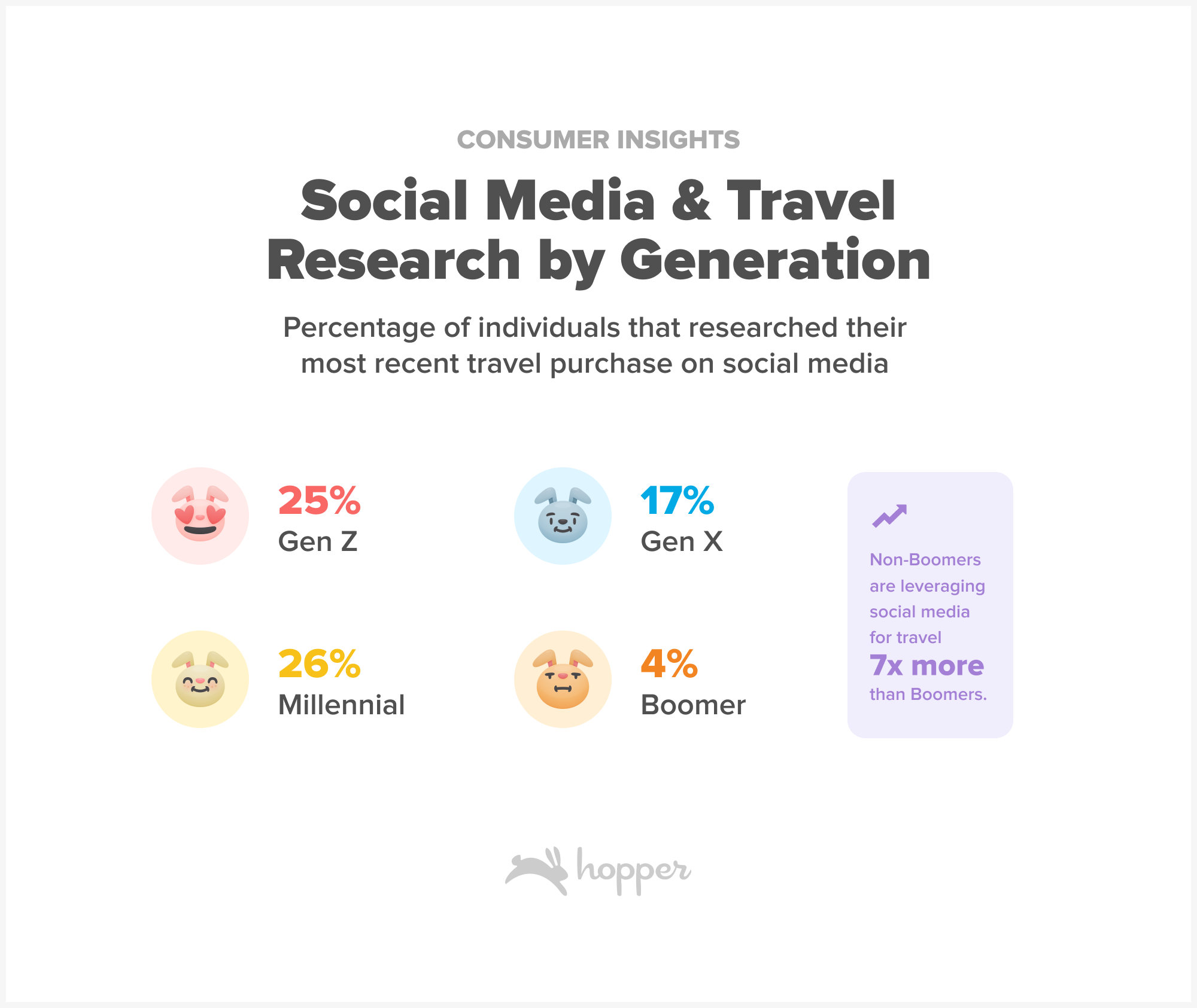
Source: Omnibus Survey of US Travelers Commissioned by Hopper
Social media is not just for connecting and curating an online image; Gen Zers are finding new products, exploring new interests, and experiencing brands on an extremely personal level. Video social media, in particular, has been growing at an incredible pace, with Cisco reporting that video internet traffic has increased 15x in the last five years to represent 82% of all internet traffic.
Travel Disruption
Most travelers are beginning to look ahead to the summer season, when millions of Americans will set out on larger vacations in the US and abroad. Travelers should expect disruption rates to increase as peak travel months like June, July and August approach. Last summer saw delay rates surge by 25% between March and July, with millions of passengers impacted. Travelers are increasingly thinking proactively about adding flexibility and optionality to their travel investments by supplementing their airfare with ancillary products like Premium Disruption Assistance. With this product, passengers who experience a qualifying delay or cancellation can either rebook themselves on the next available flight to their destination (with costs covered up to a maximum amount), or keep their original flight and get compensation for 100% of their ticket cost! Premium Disruption Assistance is offered on Hopper app as well as HTS (Hopper Technology Solutions) partners including Flair Airlines.
Get the Hopper app to find the best deals.
You could save up to 40% on your next flight!
